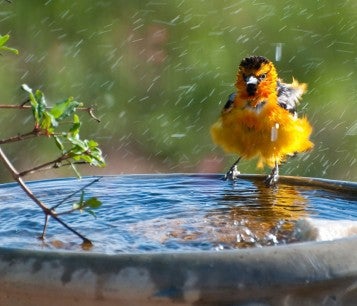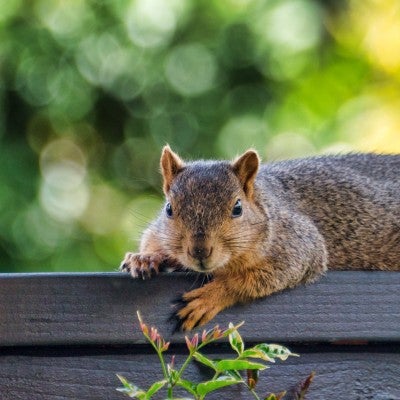Mice, like all animals, like to stay warm and fed, and often spend their lives comfortably inside buildings without causing any problems. If you still need to show them the door, these humane tips will help you find them a new home.
Contents
No matter how big or small your outdoor space, you can create a haven for local wildlife. By providing basic needs like water, food and shelter, you can make a difference in your own backyard.

How can I humanely remove mice?
Native white-footed and deer mice who move indoors during the early fall or winter can be live-trapped and returned to the outdoors. However, mice and rodents who have lived in buildings for their entire lives will have a slim chance of surviving outdoors. If possible, relocate mice to an outbuilding like a shed or garage.
What humane methods can be used to deter mice?
Live traps are the only humane trapping option, and can be easily purchased in hardware stores or online. Glue boards, snap traps, poisons and electrocution traps, on the other hand, are incredibly cruel and cause undue suffering to animals. Lethal control can never be justified without a diligent effort to prevent the recurrence of problems. You should never use glue boards or lethal options to solve a mouse problem.
How can I prevent mice from reentry?
Keeping mice out of buildings can be a difficult, long-term process, since they can enter buildings through openings no larger than the size of a dime. But diligent preparation is the only way to permanently stop mice from coming back.
Common entry points
- Utility pipe and wire entries
- Deteriorating siding
- Cracks in home foundations
If you suspect a mouse is entering in a particular area, sprinkling baby powder or flour lightly along the suspected wall will help you detect any tracks. Keeping flowers, shrubs and hedges trimmed at least 18 inches out from the foundation of your house will deter mice from finding their way in and also make it easier to find possible entry points. It’s also essential that you clean up any food sources they may be seeking if they return. Some examples include:
- Breadcrumbs under the toaster.
- Spilled birdseed in outbuildings.
- Pet food left out overnight.
- Food that isn’t stored in an airtight container.
How can I repair holes made by mice?
Rubber and plastic fillers (including caulk) are easily chewed through by mice and won’t work to keep them out long-term. The following repair tips will help you mouse-proof your house:
- Plug cracks around drainpipes and small openings with wire mesh or quick-drying cement.
- The best way to seal openings that don’t involve electrical wiring is a copper mesh pan scrubber.
- Ball up galvanized window screen and stuff it into larger openings, then finish with caulking or cement.
- Fill small openings with expanding-foam insulation.
Are there any health concerns with mice?
Mice can carry a number human-transmissible diseases. For this reason, you should take care in handling mice that aren’t kept as pets. You should also throw away food at the first sign that mice have gotten to it, even if you’re not positive.

